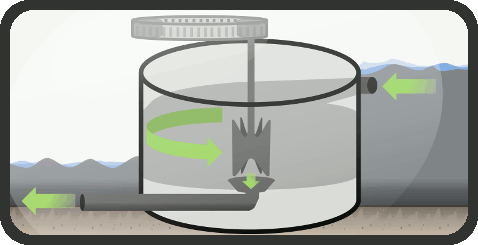

The KCT unit works similarly to a sink's drainage. As the water shoots into the chamber it forms a vortex to work its way through the drainage exit at the bottom of the chamber. An impeller in the center of the chamber is turned by a combination of gravity and Earth's rotational force.

KCT is manufactured off-site and installed easily. This video demonstrates how the first European KCT installation was put together and then installed at a remote site at Poroia, Greece.
The greater the size of the vortex, the greater the output efficiency of the installation. Of course, installation size is dictated by the height differential and flow rate of each site.
*Estimated figures
Figures are estimates. For latest figures please get in touch with us.
KapaLamda is the officially licensed KCT manufacturer. All models are certified with ISO 9001:2008.

